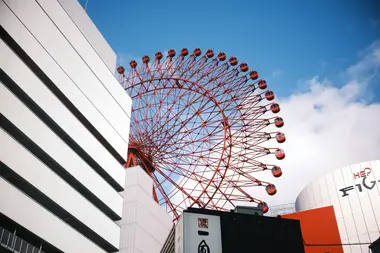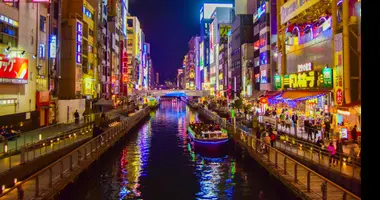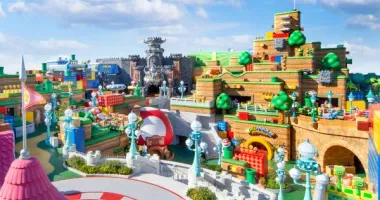Umeda Guide
- Published on : 28/12/2012
- by : Japan Experience
- Youtube
In your journey to Osaka, you can be sure that you will go through the mythical business and shopping area of Umeda.
A Bit of History
Umeda began with the building of a train station. In 1847, what had been agricultural land was filled in to accommodate Japan National Railway's Osaka Station.
The opening of Osaka Station, one of the first railway stations in the Kansai region, defined Umeda as a transportation hub and from the 19th to the 20th century, other railways followed suit, building terminals close to Osaka Station.
Most of these, however, borrowed the name of the Umeda area, rather than that of Osaka City. The modern day result is that Umeda station is a considerable piece of real estate serving numerous train lines.
May 2011 saw the opening day of Osaka Station City when 50,000 people came to experience the thoroughly up-to-date complex of shopping, dining, and entertainment venues that has engulfed JR Osaka Station.
Main attractions in Umeda
Umeda Sky Building
A few blocks to the south of the station, the landmark, Umeda Sky Building, has stood since 1993. Two 40-story towers are joined at the top by an observation deck featuring restaurants that overlook the city from a vantage of 173 meters, or for a small fee you can look out from the rooftop. The basement is a collection of restaurants meant to resemble the Osaka of the early 20th century, and on the grounds are modern sculptures and a nicely manicured garden, complete with a small rice paddy. The court between the towers is often the site of cultural festivals.
The Hankyu Department Store
Built in 1929, the store was just one of the attractions along the railway, which ran from Osaka to Kobe, but it inspired a trend that you can see throughout Japan today: railway terminals and junctions throughout the archipelago now feature department stores linked to the transportation companies.
In Umeda, the Hankyu Department Store has a companion just across an enclosed walkway to the north: Hankyu Grand building. Both locations offer extensive shopping and dining opportunities. Nearby are entrances to a labyrinth that is said to be the world's largest underground shopping arcade. Constructed in the 1960's five subterranean avenues radiate out from Osaka Station City: Diamor osaka, Herbis Osaka, Hankyu Sanbangai, Dojima Underground Shopping Center and Whitey Umeda.
- A good place to meet up ⇾ Big Man Square : a large, vaulted space in front of Hankyu Railway's Umeda Station. It is named for the giant TV screen, Big Man, mounted in the northwest corner. Big Man is a good location to know, because it is a popular gathering spot for groups of any size before they set off for an evening in the area or beyond.
Hep Five Building
Experience the big red Ferris Wheel, one hundred and six meters high, located on the Hep Five building, to admire the view over the city, the port of Osaka and Ikoma mountains or head to the floating garden observatory, with views to seventy-three meters above the ground from the outdoor gallery.
Access - how to get to Umeda
As we said before, Umeda is the hub of transportation of Osaka. Here is a list of some of the different railways and lines that are connected to the Umeda district :
- Hankyu Lines – Osaka-Umeda Station
- Hanshin Main Line – Osaka-Umeda Station
- Midosuji Line (Osaka subway) – Umeda Station
- JR Lines, JR Tokaido Main Line, Osaka Loop Line – Osaka Station
- Tanimachi Line (Osaka subway) – Higashi-Umeda Station
- Yotsubashi Line (Osaka subway) – Nishi-Umeda Station





























